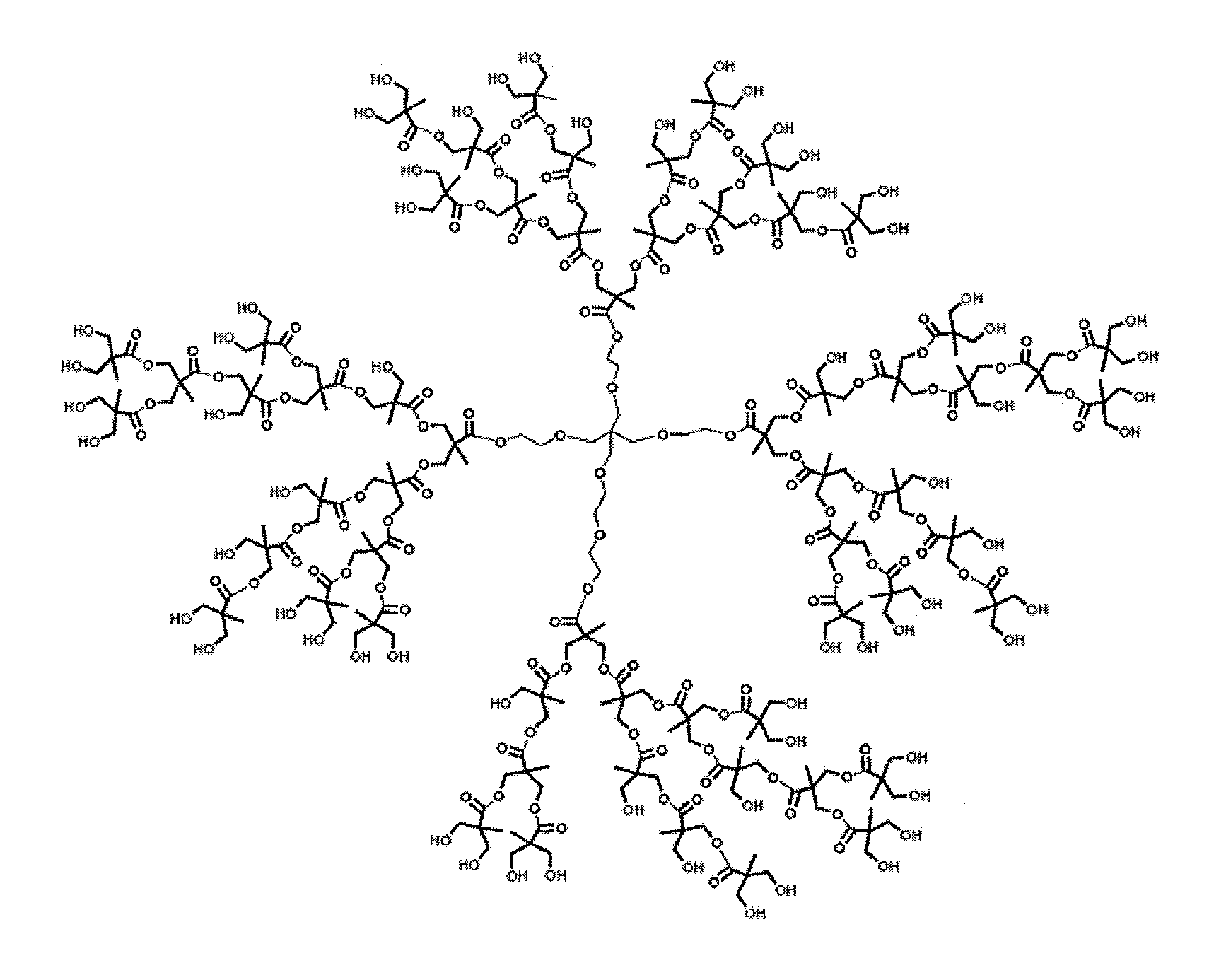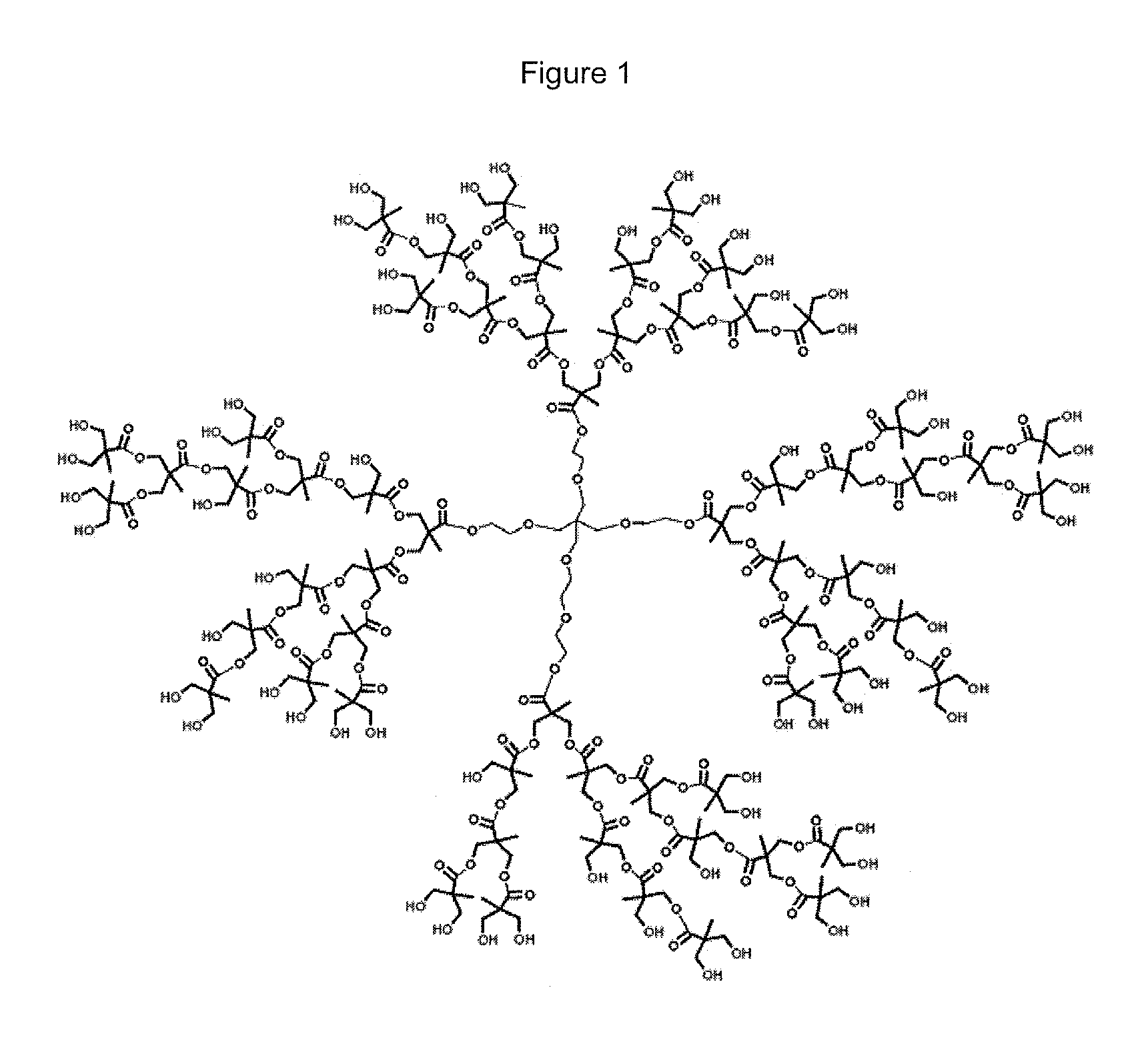Plasma surface activation method and resulting object
a surface activation and plasma technology, applied in the field ofplasma techniques, can solve the problems of inability to avoid all voc emissions, increase costs, and inhomogeneous surface changes, and achieve the effects of high density of functional groups, and strong bonding of those functional groups
- Summary
- Abstract
- Description
- Claims
- Application Information
AI Technical Summary
Benefits of technology
Problems solved by technology
Method used
Image
Examples
examples
[0081]Hyperbranched bis-MPA polyester-64-hydroxyl (generation 4, ≧97%, CAS 326794-48-3) was purchased from Sigma-Aldrich. This hyperbranched product is formed by the step growth addition by esterification of 2,2-bis(hydroxymethyl)propanoic acid onto a starting polyol having 4 hydroxyl functions, and this up to 4 generations such that the hyperbranched product comprises about 64 hydroxyl functions per molecule. The product may be characterised by the following specification:[0082]Name: Hyperbranched bis-MPA polyester-64-hydroxyl, generation 4, ≧97%[0083]CAS number: 326794-48-3[0084]Mol. weight: theoretically 7323.32, actually approximately 7323 g / mole[0085]Conforming to structure of FIG. 1 by IR or by H−1NMR.[0086]Elemental analysis: 49.1%-52.1% carbon
[0087]A precursor solution was prepared by incorporating 1 gram of this hyperbranched compound into 9 grams of 2-hydroxyethylacrylate. The solution was homogenized at room temperature under mechanical stirring for 30 minutes.
[0088]The p...
PUM
| Property | Measurement | Unit |
|---|---|---|
| viscosity | aaaaa | aaaaa |
| viscosity | aaaaa | aaaaa |
| viscosity | aaaaa | aaaaa |
Abstract
Description
Claims
Application Information
 Login to View More
Login to View More - R&D
- Intellectual Property
- Life Sciences
- Materials
- Tech Scout
- Unparalleled Data Quality
- Higher Quality Content
- 60% Fewer Hallucinations
Browse by: Latest US Patents, China's latest patents, Technical Efficacy Thesaurus, Application Domain, Technology Topic, Popular Technical Reports.
© 2025 PatSnap. All rights reserved.Legal|Privacy policy|Modern Slavery Act Transparency Statement|Sitemap|About US| Contact US: help@patsnap.com


